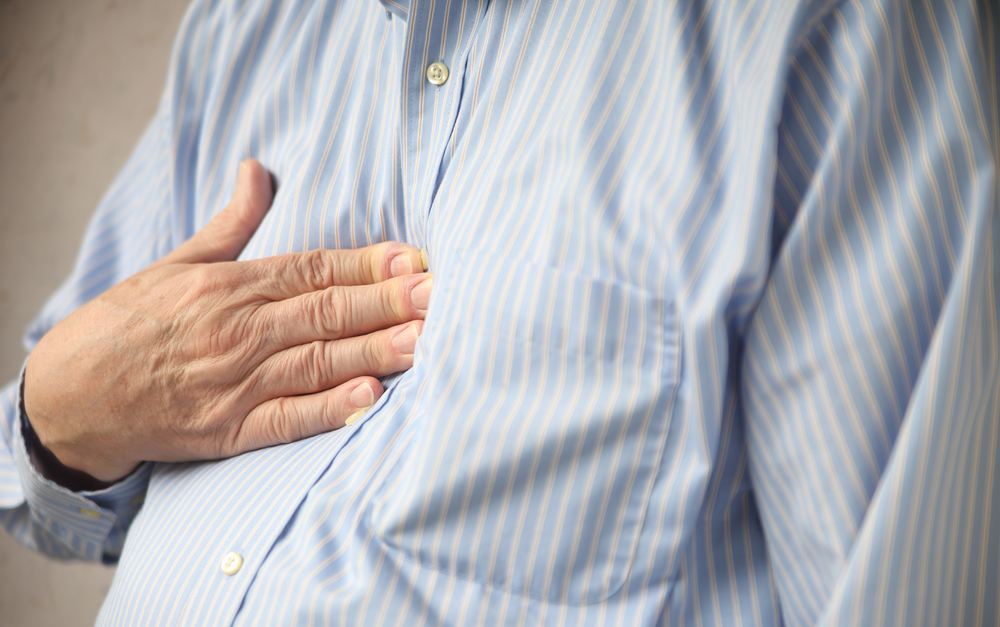Acid reflux (also called heartburn) is one of the most common disorders of our modern day society. And we take a LOT of drugs to try and reduce the burn – over 200 million prescriptions are filled annually for proton pump inhibitors (PPIs) and other acid reflux medications. However, acid reflux is not a disease; it’s an adaptation by the body and it can almost always be corrected.
Acid reflux, heartburn, reflux esophagitis and Gastroesophageal Reflux Disease (GERD) are all terms that are used to describe a condition where stomach acid refluxes or ‘backs-up’ into the esophagus causing any number of symptoms, including chest pain (many people even describe it like they are having a heart attack), pressure in the chest, burning in the chest and/or throat, sore throat or an acid taste in the mouth. Most times this occurs after eating and/or anytime they lie down in a horizontal position.
Ironically enough, these conditions may be caused by two very different scenarios; one involves hypoacidity (or impaired production of acid in the stomach) and one involves hyperacidity and/or bacterial infection. Let’s take a look at each.
Hypoacidity
Interestingly enough, many of the people that have symptoms commonly described as acid reflux or heartburn actually experience these conditions because they are not producing enough stomach acid to properly digest food. This causes the food to sit too long in the stomach with a constant churning of the stomach to try and properly digest the food, creating irritation leading to the sensation of acid reflux.
Symptoms commonly associated with hypoacidity include excessive burping, fullness for extended periods of time after meals (or more commonly described as a sensation that foods just sit “like a rock” in the stomach), bloating, poor appetite, an easily upset stomach, a history of constipation and/or known food allergies. In addition, a bacteria called H. pylori can infect the stomach lining and cause a decrease in stomach acid. In these instances, taking an antacid, whether it is over-the-counter or a prescription may eliminate the symptoms, but it will actually make the underlying problem worse.
The correct course of action in cases of hypoacidity are to (1) heal the lining of the GI tract, using a combination of dietary guidelines and a couple products, including Ortho Biotic – 1 capsule 2x/day (so supply good bacteria), Zinlori 75 – 1 tablet 2x/day (to heal the lining of the GI tract and eliminate H. pylori) and Glutagenics – 1 tsp 3x/day before meals (to heal the lining of the GI tract); (2) increasing the acid production in the stomach by (a) taking 2-3 tsp of apple cider vinegar with meals (to naturally stimulate hydrochloric acid production and (b) supplementing betaine HCl if necessary; and (3) providing digestive support using a product like Ortho Digestyme or Plant Enzyme Digestive Formula with meals.
Hyperacidity and/or Bacterial Infection
Your digestive system produces strong acids and juices that are designed to help break down the food you eat so that it can be used to nourish the body. The lining of the healthy stomach is marvelously resistant to these juices and is not affected by their caustic nature. In persons with ulcers, this defense system of the stomach’s lining against stomach acids has broken down somehow. In these cases, even when a person’s stomach contains no food, the digestive juices pour forth and work away at the stomach lining as though it were food. The continued irritation of this now delicate area soon produces a sore, which is called an ulcer; ulcers can be incredibly painful.
Symptoms of hyperacidity and/or ulcers vary from headaches to choking sensations to low back pain to itching. When pain does occur in the stomach, a person often charges off to some dietary indiscretion (i.e., comfort foods). The pain finally becomes so intense as to be clearly recognizable as an ulcer.
Symptoms include: stomach pain just before and/or after meals; dependency on antacids; chronic abdominal pain; a sensation of ‘butterflies’ in the stomach; difficulty belching; stomach pain when emotionally upset; sudden, acute indigestion; relief of symptoms by drinking carbonated beverages, cream or milk; history of ulcer or gastritis (irritation of the stomach); and black stools when not taking iron supplements.
The key here is to isolate the reason the irritation and/or hyperacidity is occurring and to correct it. Stress, poor diet, food sensitivities and food allergies can all play a role. In some cases, a bacterium called helicobacter pylori (H. pylori) is the offending agent. Obviously, the first step is to correct, reduce and/or eliminate any offending agents. In addition, concerted steps must be taken to repair the lining of the GI tract; this is where supplements can be a big help, including Ortho Biotic – 1 capsule 2x/day (so supply good bacteria), Zinlori 75 – 1 tablet 2x/day (to heal the lining of the GI tract and eliminate H. pylori) and Glutagenics – 1 tsp 3x/day before meals (to heal the lining of the GI tract).
Saying Good-Bye to Heart Burn
There are many things that you can do to help relieve the pain and discomfort of acid reflux by addressing the underlying root causes of the disorder. Use the suggestions above to eliminate the burn and to start enjoying eating once again!


